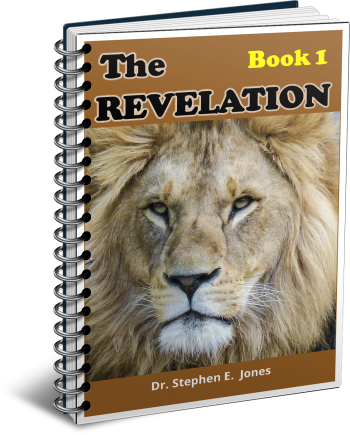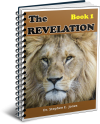Latest Posts
View the latest posts in an easy-to-read list format, with filtering options.

A study of Revelation 1-2, ending in Revelation 2:17. This is book 1 of an 8 part book series.
Category - Bible Commentaries

The title of John’s book comes from the first three words recorded: Apokalupsis Iesou Christou, “Revelation of Jesus Christ.” The term apokalupsis is “revelation, manifestation, appearing, or unveiling.” It is a compound word: apo (“from, off, of separation”) and the verb kalupto, (“to veil, to hide”). Together, the two parts speak of unveiling.
There seems to be a double meaning in this phrase. First, it is a revelation of truth from Jesus Christ—that is, revealing something that was previously veiled or hidden. Secondly, it presents the unveiling of Jesus Christ, who is the embodiment of Truth. In John 14:6, 7 we read,
6 Jesus said to him, “I am the way, and the truth, and the life; no one comes to the Father, but through Me. 7 If you had known Me, you would have known My Father also; from now on you know Him, and have seen Him.”
To believe the words of Jesus is to recognize Him as the Truth, for one cannot separate truth from its origin in His Person. We know people by their fruit.
In order to truly understand the book of Revelation, where Jesus Christ is unveiled, we should see the book not only as a continuation of Daniel, but also as a book that builds upon the Gospel of John, which he wrote earlier. In particular, it is built upon the sixth miracle-sign in his Gospel, which is found in John 9. It is the story where Jesus healed the man who had been blind from birth. His eyes were veiled until Jesus unveiled Himself to the man.
The man born blind became a believer and a disciple. In later years he accompanied the Bethany family to Provence in Gaul and became the bishop of Augusta Tricastinorum and the village of St. Restitut, which is named after him. When he moved out of Judea, he took the Roman name Restitutus (Latin: “restored”), because when Jesus healed him, his eyesight was restored. Restitutus became a living sign of the unveiling of his eyes so that he could see Jesus Christ.
John wrote his gospel to reveal, or unveil, the feast of Tabernacles. For this reason there are eight miracle signs in John’s gospel, one for each of the eight days of Tabernacles. Together, they form a Hebrew Parallelism in the structure of the book.
While the main focus of John’s gospel was upon the two central signs (presenting the two comings of Christ in D and D1), John’s book of Revelation presents C and especially C1. We are all born blind until Jesus unveils Himself to us and removes the veil from our eyes so that we may see the truth and believe in Him. The blind man was sent to the pool of Siloam to wash his eyes, and there he was healed (John 9:7). Siloam means “sent.” The meaning of this sign is given toward the end of the chapter, where the man was excommunicated from the temple (John 9:34).
The parallel story is of the man healed at the other pool in Jerusalem, called Bethesda (John 5:2). For some reason he could not walk, but Jesus told him, “Arise, take up your pallet and walk” (John 5:8). This speaks of the power of the resurrected life, which brings with it the ability to fulfill one’s calling. Hence, the man is “sent.” The meaning of this sign is explained in Jesus’ teachings recorded in the rest of John 5. It is primarily about becoming an Amen people. Like Jesus, those who are truly “sent” do nothing of themselves (John 5:19, 30), but only bear witness of Christ and His truth. In this way they “honor the Son” (John 5:23), rather than themselves.
As I said, the sign running parallel to the Bethesda event is the one at the pool of Siloam, where the blind man’s eyes were healed. In both cases the religious leaders led the opposition, basing their objection on the fact that Jesus had healed on the Sabbath day. In both cases they appealed (in vain) to Moses (John 5:45-47 and John 9:28, 29) in support of their blind viewpoint.
The religious leaders in Jesus’ time did not understand that their eyes had been veiled ever since the days of Moses, when Moses put a veil over his face to hide from them the glory of God (Exodus 34:29-35). Paul tells us in 2 Cor. 3:12-16,
12 Having therefore such a hope, we use great boldness in our speech, 13 and are not as Moses, who used to put a veil over his face that the sons of Israel might not look intently at the end of what was fading away. 14 But their minds were hardened; for until this very day at the reading of the old covenant the same veil remains unlifted, because it is removed in Christ. 15 But to this day whenever Moses is read, a veil lies over their heart; 16 but whenever a man turns to the Lord, the veil is taken away.
When Moses veiled his face, it did not hinder Moses’ eyesight. The veil hid the glory of God from the people. They were the blind ones, not Moses. Hence, Paul says, “a veil lies over their heart.” This veil “remains unlifted” as long as people retain confidence in the Old Covenant and reject the Mediator of the New Covenant. The Greek word translated “unlifted” is anakalupto. The KJV renders it “untaken away.” Not only does the veil remain upon them in a passive sense, but it is also deliberately NOT REMOVED.
The key to removing this veil is by faith in Jesus Christ and by adhering to the New Covenant. When the two men were healed, first at Bethesda and later at Siloam, they discovered that their belief in Jesus brought them into direct conflict with those who claimed to believe in Moses. But in their blindness, they did not believe in Moses either, for the veil remained over their eyes, preventing them from seeing the glory of God that was upon Moses. Hence, after healing the man at Bethesda, Jesus told the religious leaders in John 5:44-47,
44 How can you believe, when you receive glory from one another, and you do not seek the glory that is from the one and only God? 45 Do not think that I will accuse you before the Father; the one who accuses you is Moses, in whom you have set your hope. 46 For if you believed Moses, you would believe Me; for he wrote of Me. 47 But if you do not believe his writings, how will you believe My words?
In other words, they did not seek to pierce the Old Covenant veil on Moses’s face to see the glory of God. They were content with receiving glory from one another through titles, positions of authority, and self-righteous reputation. They appealed to Moses, only to find that Moses was a witness against them in the divine court.
The book of Revelation, then, is not intelligible to those who remain veiled by the Old Covenant. One must actually believe Moses, who testified of Jesus. One must come to Moses and request him to remove the veil from his face, so that we may read his writings with New Covenant eyes. Only then may we see His glory and understand His truth. And when Moses removes the veil from his face, we come face to face with Jesus Christ, who was the prophet similar to Moses. Deut. 18:18, 19 says,
18 I will raise up a prophet from among their countrymen like you, and I will put My words in his mouth, and he shall speak to them all that I command him. 19 And it shall come about that whoever will not listen to My words, which he shall speak in My name, I Myself will require it of him.
This is applied to Jesus in Acts 3:22, 23. The prophecy of Moses tells us that God would hold men accountable if they refused to listen to the words of this Prophet. The paraphrase in Acts 3:23 is more specific, saying,
23 And it shall be that every soul that does not heed that prophet shall be utterly destroyed from among the people.
The veil is linked to the Old Covenant, and the Old Covenant, allegorically speaking, is Hagar (Gal. 4:24) and the earthly Jerusalem (Gal. 4:25). In fact, the earthly city of Jerusalem is the visible symbol of the Old Covenant that must be “cast out” as a bondwoman (Gal. 4:30).
Hence, anyone who retains confidence in the Old Covenant and considers Jerusalem to be their spiritual mother is yet veiled and cannot see the glory of the unveiled Christ. Such people are spiritual Ishmaelites and will not be inheritors of the Kingdom unless they repent and become children of the New Jerusalem (“Sarah”).The Apostle Paul says, “And you, brethren, like Isaac, are children of promise” (Gal. 4:28).
The book of Revelation was “signified” by the tav, the mark or sign that was originally written in the shape of a cross or X. It is as if the book was both sealed and unsealed, locked and unlocked, at the same time. The key to understanding the book is the mark of God, the tav, the sign of the cross, which must be upon our foreheads, as we see in Revelation 7 with the sealing of the tribes. While men may put a physical mark on their foreheads as a religious act, such physical marks will do nothing to remove the veil, as long as those people remain dependent upon Old Covenant religion.
So the title of the book of Revelation, taken from the first few words of the book, sets forth the purpose of the book itself. But apart from understanding the concept of the veil and the unveiling, most people will read the book with eyes yet veiled. Therefore, our prayer is that we would believe the words of Moses, who wrote of Jesus. Our prayer is that Moses would remove his Old Covenant veil, so that we might see the glory of Jesus Christ in the face of Moses and in all of Scripture.
Only then is Jesus truly unveiled, one step at a time, by unsealing the book of Revelation.